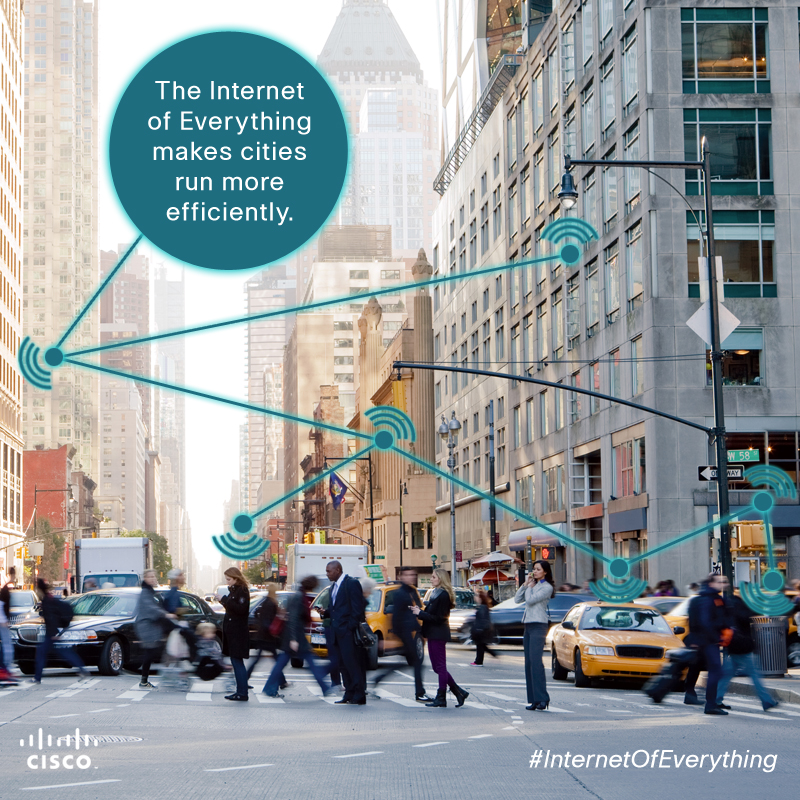































Barcelona, Amsterdam, Nice, London and New York are arguably some of the world's most cosmopolitan cities. However, they have more than glamorous fashions, exquisite cuisine and vibrant nightlife in common. All are connecting things, such as cars and trash cans, to the Internet, making their cities work more efficiently.
As the Internet of Things continues to grow and connect things, and the explosion of big data, cloud and mobile devices change our landscape, it's important to emphasize that a connected life is more than just smart appliances. As more things, people, and data become connected, the power of the Internet (essentially a network of networks) grows exponentially.
This is what we call the Internet of Everything (IoE) -the network effect of bringing together people, process, data and things-to create better social, environmental and economic outcomes in businesses and communities.
Recently, I wrote about how innovative cities, like Copenhagen, and the surrounding districts of Albertslund and Frederikssund are taking decisive action to reinvent themselves with the latest network infrastructure linked to the Internet.
Here's a closer look at a few examples of the Internet of Everything in action in cities all over the world:

These examples are just the beginning of how with the Internet of Everything can change our world.
Thirty years ago, there were just 1,000 connections to the Internet throughout the world. Today, with the help of app-centric infrastructure, sensors and mobile devices, there are about 13 billion connections, and this is still just 1 percent of what's possible. The economic opportunity to connect the unconnected totals$19 trillion, comprising$4.6 trillion for the public sector, two-thirds of which can be realized by cities.
In 2020, we expect 50 billion things to be connected to the Internet, which will still be scratching the surface of what's possible.
We know that data is doubling every two years, and according to IDC the digital universe will expand to 44 zettabytes, or 44 trillion gigabytes, annually by 2020. That's even more staggering when you consider that today 90 percent of data is dark -it is only viewed once or not at all.
However, this explosion of data and apps -when properly optimized -presents unprecedented opportunities to better manage resources and improve quality of life. By embracing the Internet of Everything, cities across the globe can are lead the way toward a more sustainable world. Will your city be next?
Be sure to follow @CiscoIoE and join the conversation,#InternetOfEverything.
Additional Resources:
 Hot Tags :
Internet of Things (IoT)
Internet of Everything (IOE)
IoE
InternetofEverything
Wim Elfrink
Smart City
Hot Tags :
Internet of Things (IoT)
Internet of Everything (IOE)
IoE
InternetofEverything
Wim Elfrink
Smart City